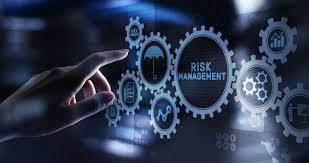Maintaining Focus on Cyber Risks (Part II of IV)

If you read about the world of hackers and cyber threats, you will quickly become numb to the creativity and variety of techniques that may threaten your organization. Like all risks, however, the key is to consider practically the real and significant threats to your organization. If you attempt to address each and every possible threat, you will drive yourself crazy. It is important to maintain a level head.
One of the fastest developing trends is the movement of processing and data storage to the cloud. As companies move more to the cloud, the antiquated risks of on-premises data processing and storage functions becomes less relevant. This trend will continue. Companies have to ensure that they have the right strategies in place to minimize risks with their cloud providers (e.g. AWS, Azure).
Depending on your company’s precise information and data footprint, the ranking of cyber risks can change. Organizations have to use advanced security technologies, continually test and update their controls and educate employees on cyber risks. Cybersecurity is a function that has to be integrated into software and all systems. Like any risk mitigation strategy, proactive cybersecurity monitoring can reduce the risk and impact of a cyberattack and strengthen the organization’s reputation and marketplace trust.
As a starting point, here are some of the most significant risks that need to be assessed in order to establish an effective cybersecurity compliance program:
1. Ransomware: Ransomware continues to top the list of risks. Hackers seek to inject a malicious software to encrypt files and then demand ransom to decrypt the files. Every business needs to have a disaster recovery solution with backup of files that are included as part of an incident response plan.

2. Cloud Security: With more companies moving to the cloud for processing and storage functions, organizations have to ensure proper hygiene and controls are maintained by the provider. At the same time, the organization’s employees have to manage users, access privileges, account protections, and encryption of data. The cloud provider should be responsible for securing its infrastructures, access, and configuration of its networks. It is critical for companies to delineate the respective functions and responsibilities of the provider and the company.
Cloud applications pose significant risks as a result of misconfigurations within cloud and SaaS environments. Such misconfigurations can result in unauthorized access. Organizations have to implement strong security practices, and regularly assess access controls, monitor and audit configurations and use automated security tools to identify and remediate misconfigurations.
3. Work-From-Home Security: As more companies permit work from home alternatives, companies have to adopt strong security protocols, including use of VPNs, multifactor authentication and mobile device security solutions. Employees have to ensure strong password protections and attend regular training sessions to mitigate growing risks against employees who have work-from-home capabilities.
4. Phishing: Employees are very aware of phishing schemes but may nonetheless fall victim because of inattentive practices or rushing to complete specific tasks. Companies have developed training and testing programs to provide real-time testing of employees to ensure awareness of phishing schemes.
5. Supply Chain Security: Third-party cyber risks are significant. Supply chains have be reviewed for cyber risks, cyber defense and adherence to best practices. Cyber hackers can seek to gain unauthorized access to systems and data through third-party relationships. In this respect, a cybercriminal can disguise themselves as legitimate users or deploy malware through trusted applications. o mitigate supply chain attacks, organizations should conduct thorough due diligence when selecting partners or providers, implement strong vendor management practices, regularly assess the security practices of third parties, and monitor for any suspicious activities.
6. Identity And Access Management (IAM): IAM security manages digital identities and controls access to data, systems and resources to ensure security. To prevent unauthorized access, companies need robust policies, technologies and programs to reduce identity-related risks.

7. Internal Actor Threats: Employees pose a significant risk to organizations. Individuals who have access privileges can intentionally or unintentionally harm systems, steal data, or engage in corporate espionage activities. As a result, companies have to implement robust access controls, employ continuous monitoring and auditing of user activities, , and conduct regular security awareness training for employees.
8. DoS and DDoS Attacks: Denial of Service (DoS) and Distributed Denial of Service (DDoS) attacks remain a potential threat, and target web servers to render them inaccessible to legitimate users. Organizations should invest in available DDoS mitigation solutions, and implement traffic monitoring and anomaly detection mechanisms.
9. Artificial Intelligence (AI) And Machine Learning (ML): With the rise of AI and ML, cybercriminals are likely to incorporate to automate and scale their attacks. On the flip side, AI and ML can be used to enhance cyber defenses. The growing availability of AI chatbots increases the risk that employees could inadvertently share confidential information with these tools.
10. Cyber Espionage: Cyber espionage attacks will remain a real threat. Last year, the Operation Aurora attack on Google Gmail underscored the need for organizations to implement network segmentation and intrusion detection protocols. In response, companies may seek the assistance of law enforcement to assist in mitigating the risk of cyber espionage.















